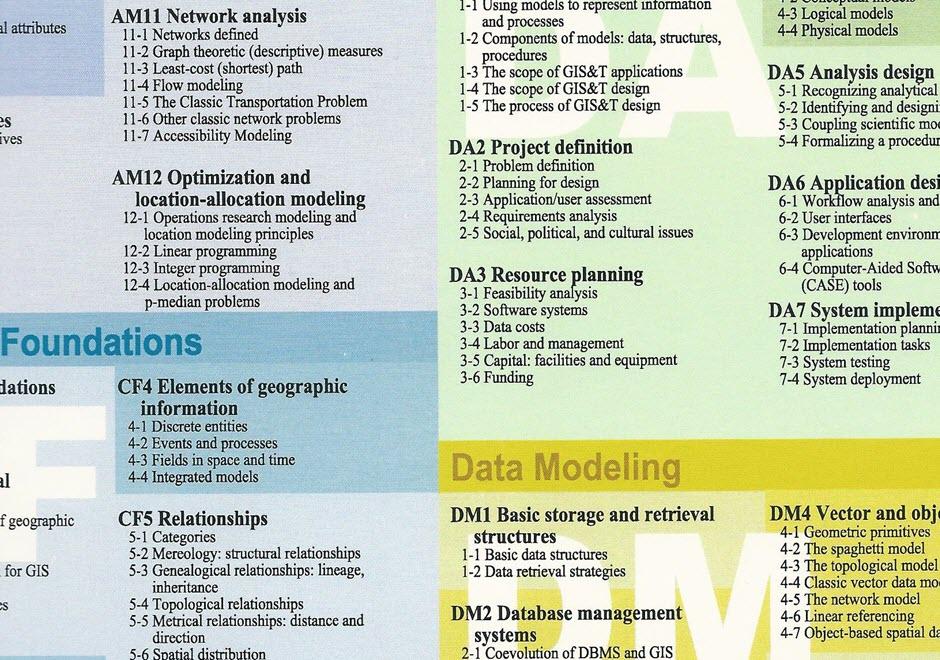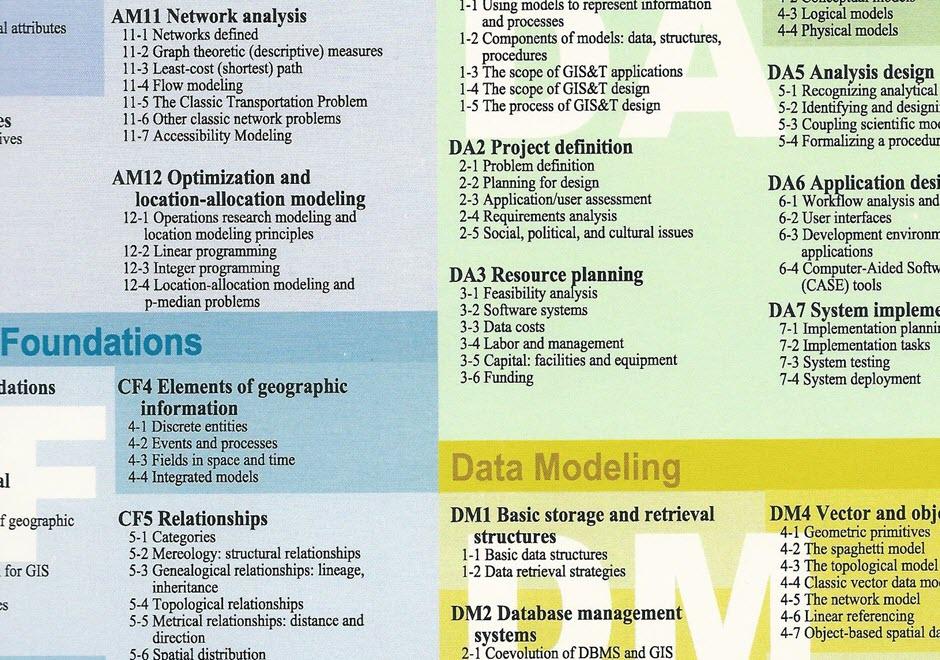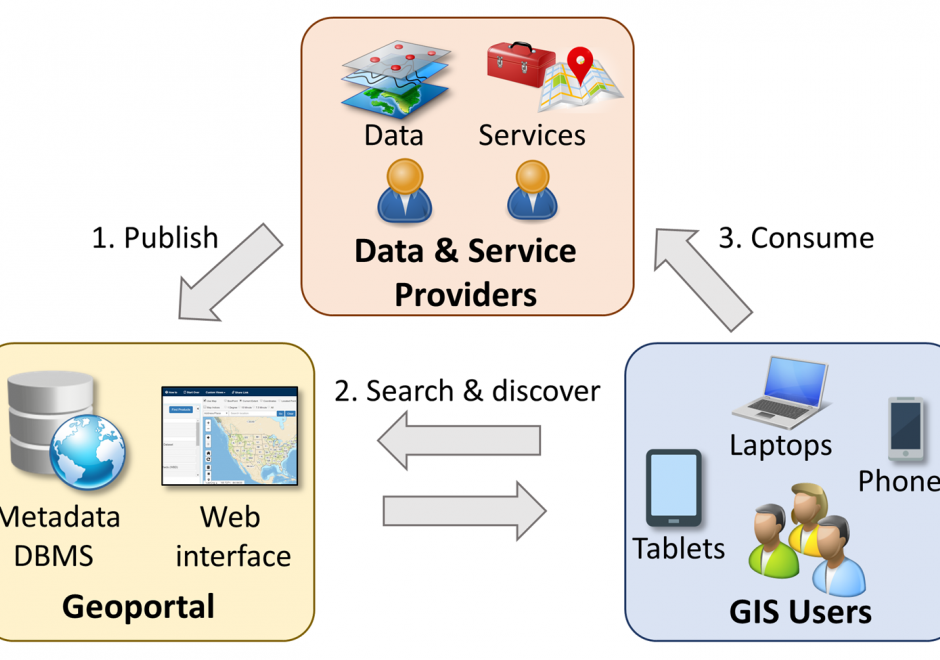CP-01 - Software systems

- Describe the major geospatial software architectures available currently, including desktop GIS, server-based, Internet, and component-based custom applications
- Describe non-spatial software that can be used in geospatial applications, such as databases, Web services, and programming environments
- Compare and contrast the primary sources of geospatial software, including major and minor commercial vendors and open-source options
- List the major functionality needed from off-the-shelf software based on a requirements report
- Identify software options that meet functionality needs for a given task or enterprise
- Evaluate software options that meet functionality needs for a given task or enterprise



KE-06 - Social, political, and cultural issues